Paul L Rosin
TINQ: Temporal Inconsistency Guided Blind Video Quality Assessment
Dec 25, 2024Abstract:Blind video quality assessment (BVQA) has been actively researched for user-generated content (UGC) videos. Recently, super-resolution (SR) techniques have been widely applied in UGC. Therefore, an effective BVQA method for both UGC and SR scenarios is essential. Temporal inconsistency, referring to irregularities between consecutive frames, is relevant to video quality. Current BVQA approaches typically model temporal relationships in UGC videos using statistics of motion information, but inconsistencies remain unexplored. Additionally, different from temporal inconsistency in UGC videos, such inconsistency in SR videos is amplified due to upscaling algorithms. In this paper, we introduce the Temporal Inconsistency Guided Blind Video Quality Assessment (TINQ) metric, demonstrating that exploring temporal inconsistency is crucial for effective BVQA. Since temporal inconsistencies vary between UGC and SR videos, they are calculated in different ways. Based on this, a spatial module highlights inconsistent areas across consecutive frames at coarse and fine granularities. In addition, a temporal module aggregates features over time in two stages. The first stage employs a visual memory capacity block to adaptively segment the time dimension based on estimated complexity, while the second stage focuses on selecting key features. The stages work together through Consistency-aware Fusion Units to regress cross-time-scale video quality. Extensive experiments on UGC and SR video quality datasets show that our method outperforms existing state-of-the-art BVQA methods. Code is available at https://github.com/Lighting-YXLI/TINQ.
Deep Generative Model based Rate-Distortion for Image Downscaling Assessment
Mar 22, 2024


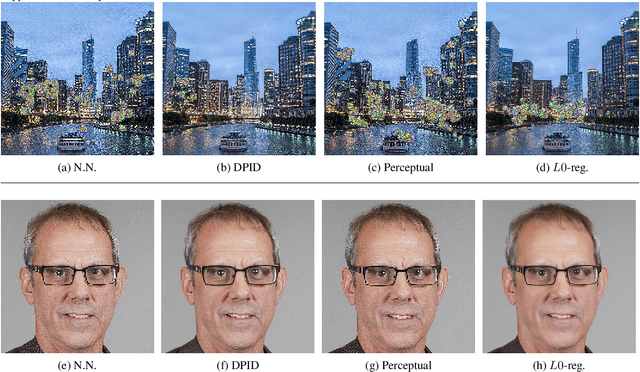
Abstract:In this paper, we propose Image Downscaling Assessment by Rate-Distortion (IDA-RD), a novel measure to quantitatively evaluate image downscaling algorithms. In contrast to image-based methods that measure the quality of downscaled images, ours is process-based that draws ideas from rate-distortion theory to measure the distortion incurred during downscaling. Our main idea is that downscaling and super-resolution (SR) can be viewed as the encoding and decoding processes in the rate-distortion model, respectively, and that a downscaling algorithm that preserves more details in the resulting low-resolution (LR) images should lead to less distorted high-resolution (HR) images in SR. In other words, the distortion should increase as the downscaling algorithm deteriorates. However, it is non-trivial to measure this distortion as it requires the SR algorithm to be blind and stochastic. Our key insight is that such requirements can be met by recent SR algorithms based on deep generative models that can find all matching HR images for a given LR image on their learned image manifolds. Extensive experimental results show the effectiveness of our IDA-RD measure.
Shape retrieval of non-rigid 3d human models
Mar 01, 2020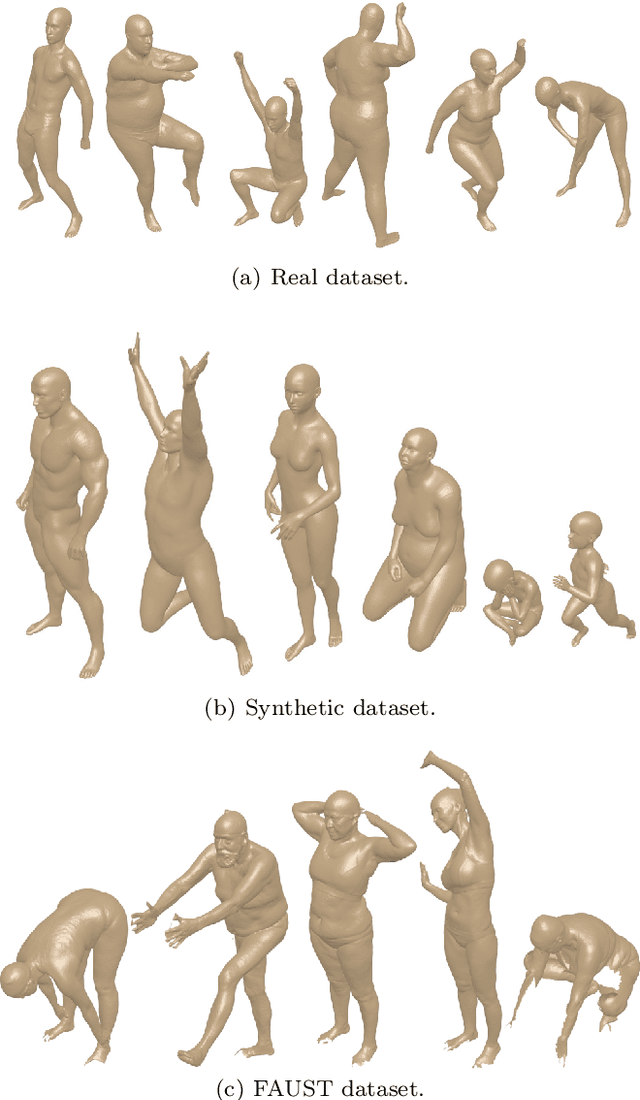
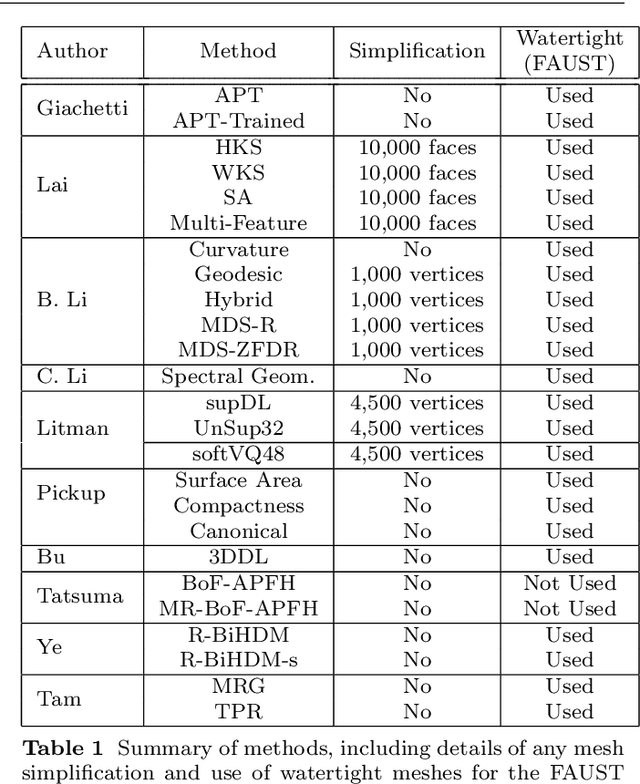
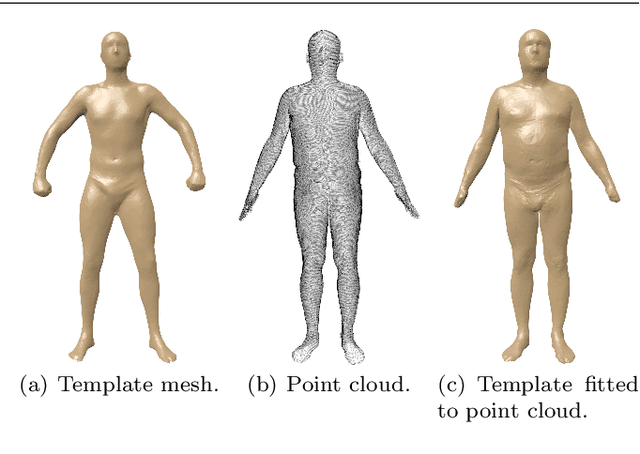
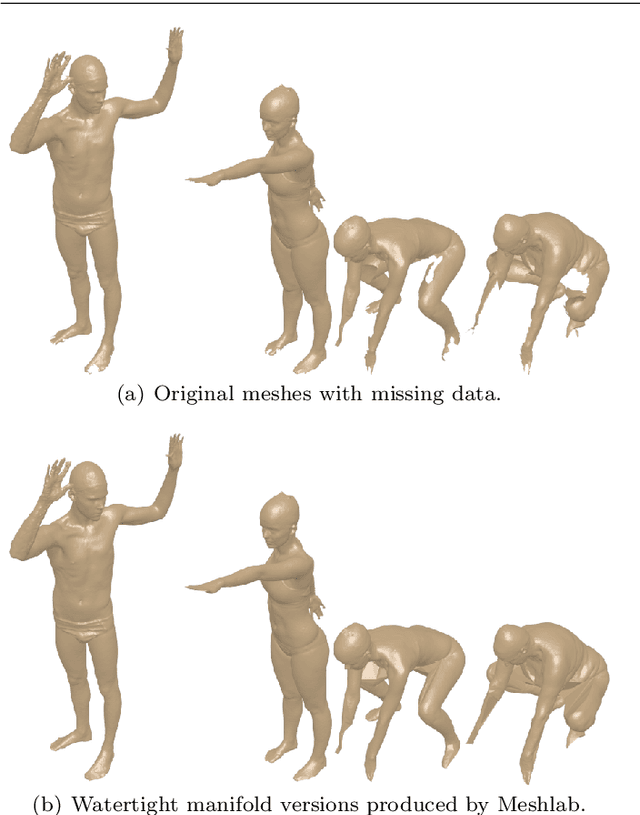
Abstract:3D models of humans are commonly used within computer graphics and vision, and so the ability to distinguish between body shapes is an important shape retrieval problem. We extend our recent paper which provided a benchmark for testing non-rigid 3D shape retrieval algorithms on 3D human models. This benchmark provided a far stricter challenge than previous shape benchmarks. We have added 145 new models for use as a separate training set, in order to standardise the training data used and provide a fairer comparison. We have also included experiments with the FAUST dataset of human scans. All participants of the previous benchmark study have taken part in the new tests reported here, many providing updated results using the new data. In addition, further participants have also taken part, and we provide extra analysis of the retrieval results. A total of 25 different shape retrieval methods.
Face Sketch Synthesis Style Similarity:A New Structure Co-occurrence Texture Measure
Apr 09, 2018



Abstract:Existing face sketch synthesis (FSS) similarity measures are sensitive to slight image degradation (e.g., noise, blur). However, human perception of the similarity of two sketches will consider both structure and texture as essential factors and is not sensitive to slight ("pixel-level") mismatches. Consequently, the use of existing similarity measures can lead to better algorithms receiving a lower score than worse algorithms. This unreliable evaluation has significantly hindered the development of the FSS field. To solve this problem, we propose a novel and robust style similarity measure called Scoot-measure (Structure CO-Occurrence Texture Measure), which simultaneously evaluates "block-level" spatial structure and co-occurrence texture statistics. In addition, we further propose 4 new meta-measures and create 2 new datasets to perform a comprehensive evaluation of several widely-used FSS measures on two large databases. Experimental results demonstrate that our measure not only provides a reliable evaluation but also achieves significantly improved performance. Specifically, the study indicated a higher degree (78.8%) of correlation between our measure and human judgment than the best prior measure (58.6%). Our code will be made available.
 Add to Chrome
Add to Chrome Add to Firefox
Add to Firefox Add to Edge
Add to Edge